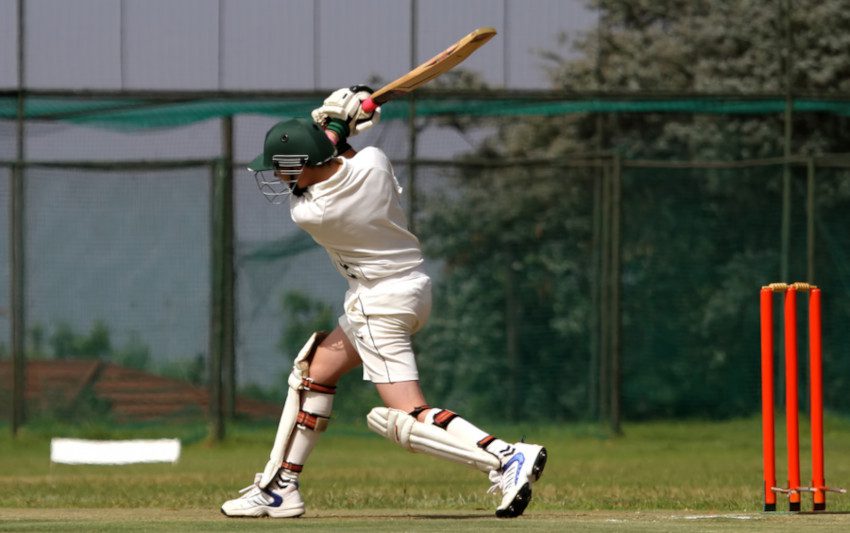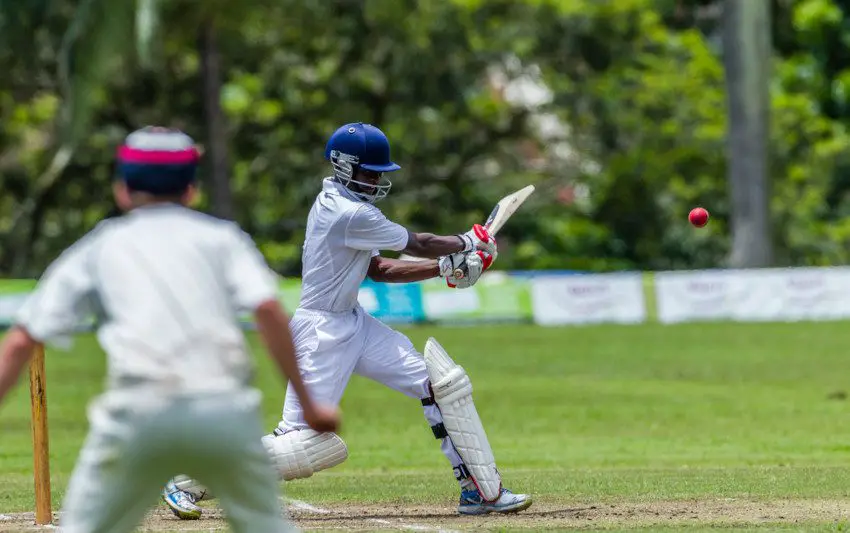Table of Contents
There are altogether six types of cricket pitches, all of which show a different degree of moisture and compaction. Each type of pitch offers advantages either for the bowler or the batter, now let’s take a look why.
What are the Types of Cricket Pitches?
Green Pitch
A green pitch has a higher covering of grass on it so it literally looks more green. This is a better type of pitch for test cricket and first class matches as it will wear slowly and last much longer over four or five days. It can help the faster bowlers initially before providing what should be an even contest between bat and ball.
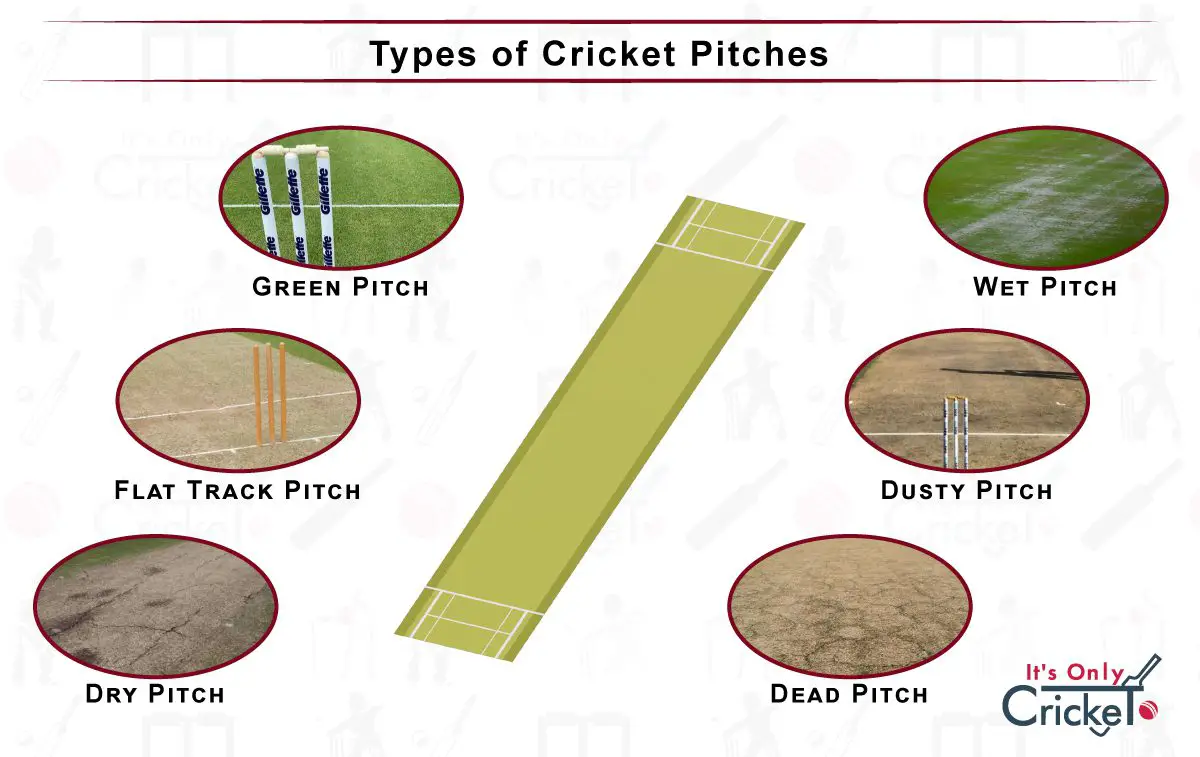
Flat Track Pitch
Also referred to simply as a ‘flat pitch’ this is a softer pitch which may have been lightly rolled. There are no cracks, no grass and little wear. A flat pitch offers little assistance to the bowlers so the batsmen will enjoy the predictable bounce which should follow.
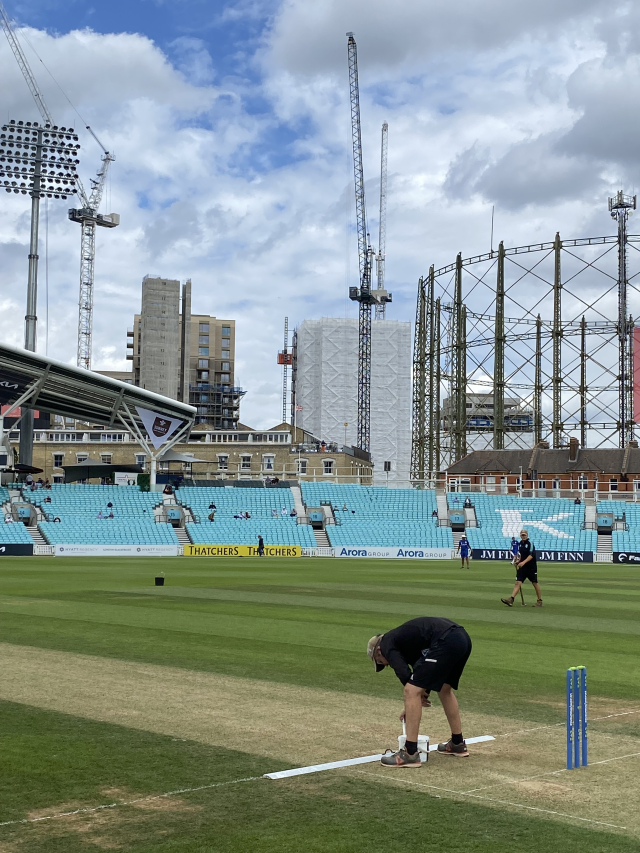
Photo shows a pitch used for an English County Championship game between Surrey and Nottinghamshire at The Oval in July 2023. It’s day two and there is a little grass covering, but overall it’s a great example of a flat track pitch.
© Matt Harris
Dry Pitch
A dry pitch will have no moisture and it will have a tendency to crack. This can suit the faster bowlers but the batsmen shouldn’t have too many problems. The ball will come nicely onto the bat and a dry pitch won’t help with deviation unless the ball hits one of those cracks.
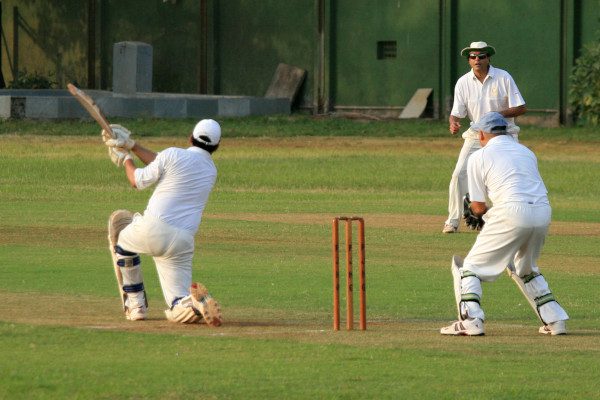
Wet Pitch
A wet pitch has moisture which can be due to humidity or a failure of the covers to do their job. If it’s too wet, the umpires may decide it’s unplayable. If play does commence on a wet pitch, the ball may skid or it may bounce higher than usual and that unpredictability will help the bowlers.
Before the days of covered pitches, cricket could be played on a ‘sticky wicket.’ Balls could literally ‘stick’ into the pitch, spinners could turn the ball much more dramatically and sticky wickets made it extremely difficult for the batters.
Dusty Pitch
Dusty pitches are typically left unrolled and they literally have a powdery covering of dust. They are dry but quite soft and this type of surface can help bowlers to spin the ball.
Dead Pitch
A dead pitch is flat with no grass or moisture. This makes it extremely hard for bowlers to take wickets. It’s a good option for limited overs matches where fans like to see lots of runs but a dead pitch would be a poor choice for test cricket.
How to Read a Cricket Pitch?
There are three major factors to look out for when reading a pitch:
- The amount of grass
- Compaction
- Moisture content
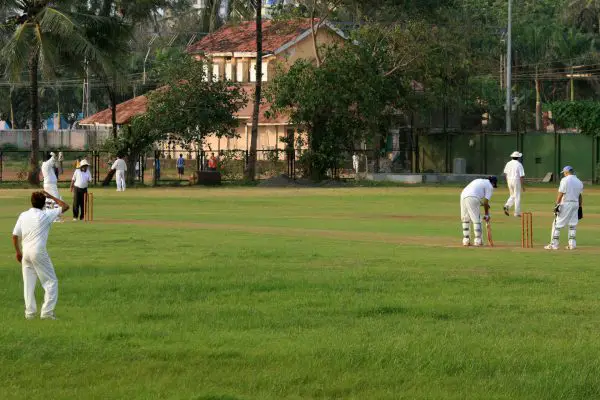
Reading a cricket pitch before a game is important for team selection and even batting order such decisions can subsequently affect the outcome of the match. It will also help a captain to decide whether to bat or bowl in the event of them winning the toss.
Things to look for include the amount of grass on the pitch. A very green surface will favour the bowlers at the start of the game so it would be a good idea to insert the opposition. A dusty pitch should aid the slower bowlers straight away and, if there are lots of quality spinners in the side, bowling first would be a good option once again.
Captains should also look to check the moisture content. If it feels very damp then it could be classed as a wet wicket and this is another good time to bowl first. Check the weather forecast and, if it’s likely to dry through the day, batting second is a better call.
If there is little grass or moisture, it’s more likely that this is a flat or dead pitch. It may help the batsmen all the way through so this is a 50/50 call on whether to bat first or second.
Types of Surfaces
Grass is the surface most of us will be familiar with. It’s used for virtually all formats of professional cricket around the world, and most amateur club players will also use it.
Grass is more versatile than other surfaces, and it is variable too. On other pitches, bounce becomes predictable, and it’s not so easy for the bowlers to spin or seam the ball. Grass is always best, but there are alternatives.
Matting wickets are often used at junior level, and may also be seen in hot countries where it’s easier to look after than grass. It’s also known as astroturf, and is usually green in colour.
Matting wickets tend to provide regular bounce, and are good options for young batters learning the game. They may, however, be harder work for the bowlers.
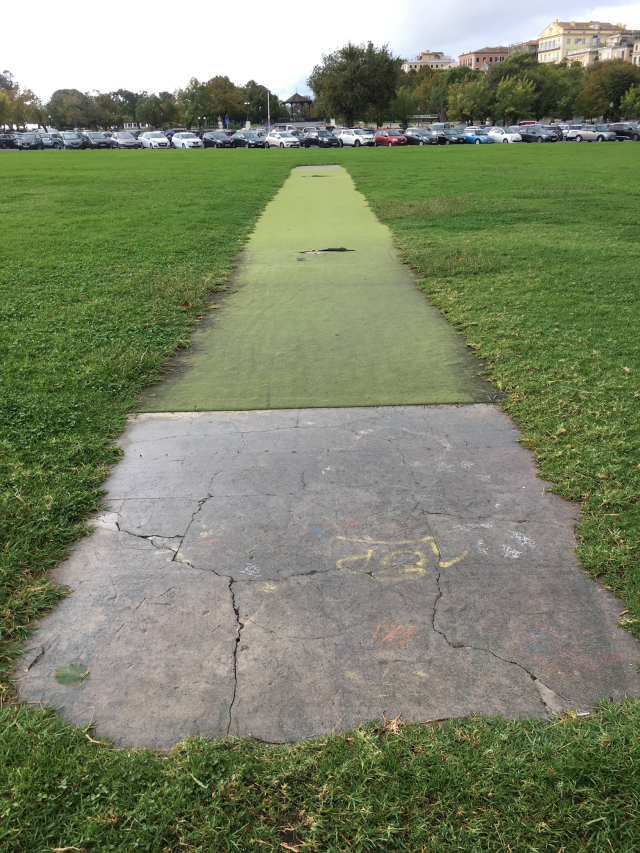
This picture shows a matting wicket placed over a concrete pitch. It’s at the Corfu Town Cricket Club on the Greek Island. The bounce here would likely be very steep, but it’s a typical surface in a hot country where cricket isn’t as widely played.
© Matt Harris
When is a Pitch Unfit for Play?
The umpires can decide if a pitch is unfit for play. It could be that weather conditions have been so poor that the wicket is wet and not acceptable for professional or amateur matches.
A wicket may also be dangerous and lead to an abandonment, as we saw in a test match between the West Indies and England in Kingston, Jamaica in 1998. The ball was ‘taking off’ from a short length and a number of England batters were hit. With the West Indies fielding a fearsome pace attack, the surface was deemed to be dangerous and the match was abandoned after just 10.1 overs.
Essentially, it’s down to the match officials to decide is a pitch is unfit for play.
Who Decides What Kind of Pitch is Prepared?
There’s an element of home advantage in pitch preparation. The host team decides what type of pitch they want prepared and they will instruct the groundstaff accordingly.
So, for example, if a home team is packed with swing and seam bowlers, they may want a little grass left on the pitch. It’s a contentious issue and one where some suggest that the away side should be able to decide whether to bat or bowl first. This might balance things out, but it’s yet to become a law of the game.
Cricket Pitch FAQ
Which Pitch is Good for Fast Bowling?
A green pitch will help the faster bowlers at the start of a game. If the covering of grass fades, that assistance may be lost so it’s a good idea for the pacemen to take advantage of that green surface while it lasts.
Which Pitch is Good for Spin Bowling?
Dusty pitches will help spin bowling as the ball will have a better chance of gripping the surface which can make it turn. At the end of a test match, a green pitch will have worn, maybe become dusty and this will also provide assistance to spinners.
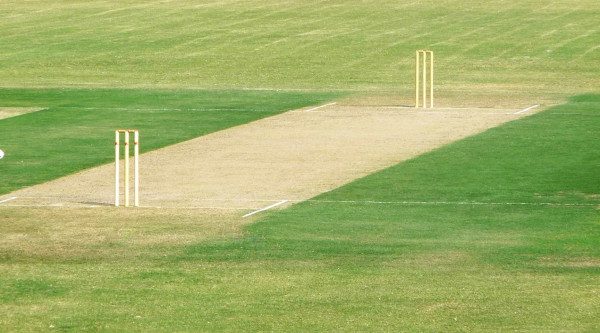
How to Dry a Cricket Pitch?
If a pitch gets wet, there are a number of drying techniques. Air blowers, the kind used to disperse leaves, are an option.
Pitchforks can be used, but only on the outfield when it’s safe to do so. We’ve even seen a helicopter and its blades being used in extreme circumstances.
Why are Indian Cricket Pitches Slow?
Climate plays an important role in the type of cricket pitch provided and this is the main reason why Indian pitches are slow. Hot, dry conditions tend to lead to a dusty pitch and this will not help the faster bowlers.
However, those types of surfaces will aid India’s spinners as they can become ‘dust bowls’.

